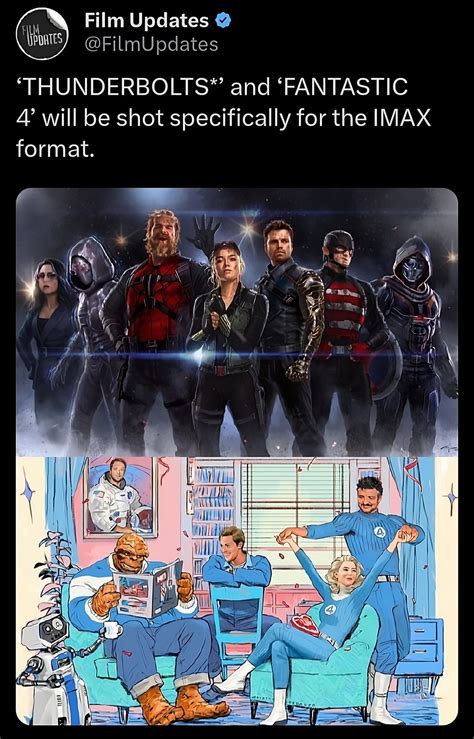
A highly anticipated event billed as a potential game-changer for the entertainment industry ultimately delivered a muted impact, leaving observers underwhelmed and questioning the long-term implications. What was touted as a revolutionary moment, poised to disrupt established norms and reshape consumer engagement, concluded with a whimper rather than the promised bang, prompting reassessments across various sectors.
The event, centered around the collaborative endeavor of actor Ryan Reynolds and Fubo, a sports-first live TV streaming platform, to launch a new marketing company designed to integrate brands directly into original content, has drawn considerable attention from advertising and media professionals. The initial hype suggested a radical shift in advertising paradigms, potentially blurring the lines between content and promotion, and offering unprecedented opportunities for brands to connect with audiences in a more organic and engaging way. However, the actual execution and initial outcomes failed to live up to the lofty expectations, resulting in a sense of anticlimactic disappointment for many who had eagerly anticipated a transformative moment.
The planned marketing company would aim to revolutionize the advertising landscape by seamlessly embedding brands within original shows and movies. Reynolds, known for his successful marketing ventures, including Aviation Gin and Mint Mobile, partnered with Fubo to capitalize on the growing demand for innovative advertising strategies. The concept involved creating content where brands played an integral role, moving away from traditional interruptive advertising models.
The idea, at its core, was to leverage Reynolds’ marketing acumen and Fubo’s technological infrastructure to create a new advertising ecosystem. This ecosystem would offer brands opportunities to integrate their products and services into original content in a way that felt natural and engaging, rather than intrusive and disruptive. The promise was to create a win-win scenario for advertisers, content creators, and audiences, where advertising enhances rather than detracts from the viewing experience.
However, despite the promising concept and the high-profile partnership, the initial launch and subsequent execution failed to generate the anticipated excitement and impact. The lack of groundbreaking content and innovative strategies left many industry observers questioning the viability of the new marketing company and its potential to disrupt the advertising landscape.
“Gone frickin’ bang shook the world. More like, went desperately looking for a parking spot and mildly inconvenienced a handful of people,” quipped a press release following the launch, encapsulating the prevailing sentiment of underwhelmed expectations. This self-deprecating humor underscores the gap between the ambitious aspirations and the modest initial results, highlighting the challenges inherent in disrupting established industry practices and meeting the demands of an increasingly discerning audience.
The lukewarm reception raises questions about the readiness of the market for such a radical shift in advertising paradigms. While the concept of integrated advertising holds promise, its successful execution requires a delicate balance between creative content and brand promotion. The initial efforts may have fallen short of achieving this balance, resulting in content that felt forced and uninspired.
Furthermore, the competitive landscape of the advertising industry presents significant challenges for any new entrant, regardless of its innovative ideas and high-profile partnerships. Established advertising agencies and media conglomerates have deep-rooted relationships with brands and extensive resources to develop and execute comprehensive marketing campaigns. To succeed in this environment, the new marketing company would need to offer a compelling value proposition that sets it apart from the competition and attracts both brands and content creators.
Looking ahead, the future of the marketing company remains uncertain. While the initial launch may have been disappointing, the underlying concept still holds potential. With adjustments to its strategy, creative approach, and execution, the company could still find success in the evolving advertising landscape. However, it will need to overcome significant challenges and demonstrate its ability to deliver innovative and engaging content that resonates with audiences and drives results for brands.
The initial plan hinged on Fubo’s capacity to provide a platform for the integrated advertising model. The streaming service aimed to become a hub for content where brands could seamlessly integrate their messaging. However, the execution of this plan has been less impactful than anticipated, raising concerns about the effectiveness of the integrated approach.
One of the key challenges lies in creating content that genuinely interests viewers while subtly promoting brands. The line between entertainment and advertising can easily blur, leading to content that feels inauthentic or overly commercial. Striking the right balance requires a deep understanding of audience preferences and the ability to create narratives that naturally incorporate brand messages.
Moreover, the success of the marketing company depends on attracting top-tier talent, including writers, directors, and actors who can bring the integrated advertising model to life. Creating high-quality content requires skilled professionals who can seamlessly blend entertainment and advertising without compromising the integrity of either.
The initial response from advertisers has also been mixed. While some brands have expressed interest in the integrated advertising model, others remain skeptical, preferring traditional advertising approaches. Convincing advertisers to embrace a new paradigm requires demonstrating the effectiveness of the integrated model and providing concrete evidence of its ability to drive sales and build brand awareness.
The situation also highlights the broader challenges facing the advertising industry as it adapts to the digital age. Traditional advertising models are becoming less effective as consumers increasingly tune out intrusive and irrelevant messages. To succeed in this environment, advertisers need to find new ways to connect with audiences in a more authentic and engaging way.
The concept of integrated advertising offers a potential solution to this challenge, but it requires a fundamental shift in mindset and a willingness to experiment with new approaches. The success of the marketing company will depend on its ability to lead this shift and demonstrate the value of integrated advertising to both brands and consumers.
The lukewarm reception to the marketing company also reflects the high expectations surrounding Ryan Reynolds’ involvement. Reynolds has a proven track record of success in both acting and marketing, and his involvement in the project raised hopes that it would be a game-changer for the advertising industry.
However, even Reynolds’ star power cannot guarantee success, and the initial results suggest that more work needs to be done to refine the integrated advertising model and attract a wider audience. The company must leverage Reynolds’ marketing expertise to create content that resonates with consumers while subtly promoting brands.
Ultimately, the success of the marketing company will depend on its ability to overcome the challenges it faces and deliver on its initial promise. The company must refine its integrated advertising model, attract top-tier talent, and convince advertisers to embrace a new paradigm. Only then can it hope to shake up the advertising industry and achieve its ambitious goals.
The article in Yahoo Entertainment highlights the anticlimactic nature of the event. The initial promise of a “world-shaking bang” was replaced by a sense of “mildly inconvenienced” expectations, suggesting that the marketing company has a long way to go before it can truly disrupt the advertising landscape. The project will need to evolve and potentially redefine its strategies to meet the initial expectations.
The original report also emphasized the need for this partnership to demonstrate tangible results. Industry analysts will likely closely monitor the performance of the marketing company over the coming months to assess its long-term viability. The key to success lies in proving that the integrated advertising model can deliver value for both brands and consumers.
This venture also underscores the competitive nature of the advertising industry. Established agencies and media conglomerates have a significant advantage in terms of resources and relationships. The new marketing company will need to be innovative and agile to compete effectively against these established players.
The failure to deliver on initial expectations serves as a cautionary tale for other companies seeking to disrupt established industries. It highlights the importance of careful planning, execution, and adaptation in the face of challenges. It also underscores the need to manage expectations and avoid overpromising results.
The ultimate success of the marketing company will depend on its ability to learn from its initial missteps and refine its approach. The company must be willing to experiment, adapt, and evolve in response to changing market conditions. Only then can it hope to achieve its ambitious goals and shake up the advertising industry.
The launch of the marketing company came at a time when the advertising industry is undergoing significant changes. Traditional advertising models are becoming less effective, and consumers are increasingly seeking out more authentic and engaging content. The company’s integrated advertising model has the potential to address these challenges, but it needs to be executed effectively to succeed.
The original article’s candid assessment of the situation highlights the importance of honesty and transparency in the business world. The company’s willingness to acknowledge its initial missteps suggests a commitment to learning and improvement. This approach may ultimately help the company to overcome its challenges and achieve its goals.
The venture also serves as a reminder that even the most innovative ideas require careful execution to succeed. The concept of integrated advertising has been around for some time, but few companies have been able to implement it effectively. The marketing company will need to learn from the mistakes of others and develop its own unique approach.
The lukewarm reception to the marketing company has prompted discussions about the future of advertising. Some industry experts believe that integrated advertising is the future, while others remain skeptical. The success of the marketing company will likely influence this debate and shape the future of the advertising industry.
The collaborative endeavor between Ryan Reynolds and Fubo underscores the growing importance of partnerships in the business world. Companies are increasingly seeking out strategic alliances to leverage their strengths and expand their reach. The success of this partnership will depend on the ability of both parties to work together effectively and share their expertise.
The launch of the marketing company has also raised questions about the role of celebrity endorsements in advertising. Celebrity endorsements can be a powerful tool for building brand awareness, but they are not a guarantee of success. The success of the marketing company will depend on the quality of its content and the effectiveness of its integrated advertising model, not just on Reynolds’ star power.
The company’s attempt to disrupt the advertising industry has highlighted the challenges of innovation. Innovation requires a willingness to take risks, experiment with new ideas, and challenge established norms. The company’s initial missteps demonstrate the importance of learning from failures and adapting to changing market conditions.
The launch of the marketing company has also prompted discussions about the ethics of advertising. Some critics argue that integrated advertising can be manipulative and deceptive, while others believe that it can be a more authentic and engaging way to connect with consumers. The company will need to be mindful of these ethical considerations as it develops its integrated advertising model.
The collaborative project highlights the increasing convergence of media and technology. Media companies are increasingly relying on technology to deliver content and engage with audiences, while technology companies are increasingly investing in media content. The success of the partnership will depend on the ability of both parties to leverage their expertise in media and technology.
The marketing company’s journey underscores the importance of adaptability in the business world. The business environment is constantly changing, and companies must be able to adapt to survive. The company’s initial missteps demonstrate the importance of being flexible and responsive to changing market conditions.
The article serves as a valuable case study for entrepreneurs and business leaders. It highlights the challenges of launching a new venture, the importance of careful planning and execution, and the need to adapt to changing market conditions. It also underscores the importance of managing expectations and avoiding overpromising results.
Frequently Asked Questions (FAQ)
1. What was the initial goal of the partnership between Ryan Reynolds and Fubo?
The partnership aimed to launch a new marketing company that would revolutionize advertising by seamlessly integrating brands into original shows and movies. The goal was to create content where brands played an integral role, moving away from traditional, interruptive advertising models. The new company intended to capitalize on Reynolds’ marketing acumen and Fubo’s streaming platform to offer a new advertising ecosystem.
2. Why was the launch of the marketing company considered a disappointment?
Despite the high expectations and the high-profile partnership, the initial launch and subsequent execution failed to generate the anticipated excitement and impact. The lack of groundbreaking content and innovative strategies left many industry observers questioning the viability of the new marketing company and its potential to disrupt the advertising landscape. The company’s initial performance did not match the hype it had generated.
3. What challenges does the marketing company face in the current advertising landscape?
The company faces numerous challenges, including the need to create content that genuinely interests viewers while subtly promoting brands, attracting top-tier talent to produce high-quality integrated content, convincing advertisers to embrace the new advertising paradigm, and competing against established advertising agencies and media conglomerates with deep-rooted relationships and extensive resources. Overcoming these challenges is crucial for the company’s long-term success.
4. How is the advertising industry changing, and how does the marketing company fit into this evolution?
The advertising industry is undergoing significant changes as traditional models become less effective and consumers increasingly seek out more authentic and engaging content. The integrated advertising model proposed by the marketing company has the potential to address these challenges by offering a new way for brands to connect with audiences. However, the company needs to execute its model effectively to succeed in this evolving landscape. The company’s initial strategy needs refinement to meet changing consumer expectations.
5. What are the key factors that will determine the future success of the marketing company?
The key factors that will determine the company’s future success include its ability to refine its integrated advertising model, attract top-tier talent, convince advertisers to embrace the new paradigm, overcome the challenges of creating compelling and authentic content, adapt to changing market conditions, and demonstrate that its model can deliver value for both brands and consumers. The company needs to learn from its initial missteps and demonstrate its ability to innovate and deliver results.









